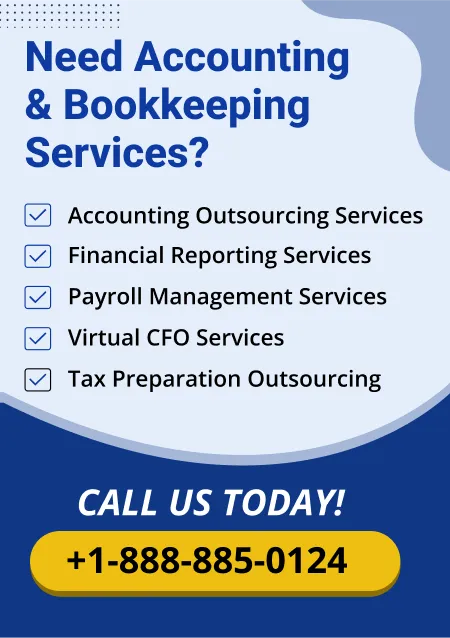The most apparent accounting service of expensing the cost of a tangible asset over its useful life involves straight-line depreciation. This straight-line depreciation calculation service is one of the most crucial services under the outsourcing accounting services of Fino Partners. This technique lowers the asset fairly in every period, and therefore, making the calculation and application easy. Therefore, companies will normally opt for this simple technique of fixing the wear and tear, or obsolescence that can creep onto fixed assets such as machinery, vehicles, or buildings. It is very helpful to know how to use the formula to properly present both its financial statements as well as its tax calculation under the tax preparation services.
What is Straight-line Depreciation under Accounting Services?
Straight-line depreciation only determines how much of a particular fixed asset deprecates in a particular period. Step-by-step calculation of the straight-line method Straight-line method of depreciation is founded on the basis that the change rate in depreciation is a constant. In simple words, it provides the percent that a particular asset loses in a particular year and then depreciates the amount equally over the remaining years.
To calculate straight line depreciation of a fixed asset you would need three numbers. Cost of the asset, shipping, taxes, installation fees etc. Salvage value of the asset-you think you could sell it for at the end of its useful life. Useful life of the asset-you think it will last so many years.
To calculate a percent of the straight-line rate of your asset you merely divide the cost of the asset minus salvage value by useful life for annual depreciation : Annual Depreciation = (Purchase Price - Salvage Value) divided by the Useful Life. This is the amount you can subtract yearly from the amount of an asset to determine its book value. Book value is defined as the amount of an asset, fully taken into consideration as to how much it depreciated up to a certain point in time.
Formula of Straight Line Depreciation under Accounting Services
Although the formula for straight line depreciation seems very simple and looks like anybody can calculate it, it's not a child's play. Hence as an expert we always suggest businesses to hire an accountant or get outsourced accounting services of expert professionals who are experienced in their respective work in order to do such tasks for your business. This makes your business accounting up to the mark and saves your business in many situations. The formula for straight line depreciation under the accounting services is comes as the following:
|
Annual Depreciation Expense=Useful LifeCost of Asset−Salvage Value/ useful file. |
Where,
- Cost of Asset is the initial buying price.
- Salvage Value: is the residual at the end of its useful life .
- Useful Life: All the years an asset is likely to be put into service.
For Example
Assume that your business purchases an iPad at $2000. You believe that there is no useful life remaining for the iPad after five years. Additionally you assume that you are capable of selling it for $500 in five years. Five years is the useful life that the IRS requires you to amortize iPad.
To find the straight line amortization of the iPad you have to calculate
Annual amortization = ($2000-$500)/5 years
=$1,500 /5 years
=$300
Under the straight-line method, your iPad will be depreciable by $300 every year.
How to Use the Straight-Line Depreciation Equation?
To come up with the straight line equation of depreciation we as outsourced accounting service providers use the following steps:
- Asset's Cost: Find the cost or the original purchasing price.
- Salvage Value: Measured the residual amount at the end of its useful life.
- Useful Life Period: Is the years within which an entity will use the asset
- Compute Depreciate: Calculate the yearly decrease through the use of the formula
- Accrue in Financial Statement: This is the cost of depreciation that an entity accords every year until it totals up to zero until an asset altogether loses its value until the salvage value
How is the Straight Line Different from Other Methods?
Things depreciate otherwise and that calls for otherwise depreciation methods like the double declining balance method, sum of years method or unit-of-production method under the outsourced accounting services. The most obvious method of the three is straight-line depreciation as compared with the others. Here is how much the iPad in this example will depreciate each year using the straight-line method:
- Depreciation year 1: $300
- Depreciation year 2: $300
- Depreciation year 3: $300
- Depreciation year 4: $300
- Depreciation year 5: $300
The unit-of-production method is a method that calculates the percentage of depreciation of an asset by dividing the total number of units produced that year by the total number of units expected over its lifetime. It differs from the straight-line method in that it uses units of production, which can be anything from labels to miles traveled by a car or kilowatt hours produced by a power plant. The formula for computing the total sum of depreciation in units of number is:
Annual depreciation in units = (purchase price-salvage value) x (number of units produced that year) / total number of units expected over lifetime. This method is better for capital items and equipment that consume with use, producing a specific number of units, miles, or kilowatt-hours, rather than years of life.
When is this Straight Line Method Formula Used?
Accounting outsourcing services use a formula to identify specific costs for accounts, including depreciation. Depreciation is an expense like any other business write-off, so proper calculation is crucial. Most firms use a straight line to books of account, but some use double declining or sum of years method to avoid more write-offs at the asset's beginning.
On the other hand, the IRS uses a very conservatively restrictive method of depreciation called the Modified Accelerated Cost Recovery System, or MACRS for tax purposes. In some cases, it will even permit you to fully depreciate the cost of such assets as computers, software, and office furniture in the first year of use, thus never requiring you to apply any of the depreciation methods. (Accountants refer to this as a Section 179 deduction). However, some assets accelerate/ MACRS or Section 179 by the IRS, such as intangible assets, copyrights, patents and trademarks. You apply instead amortization to that.
How do I Apply Straight Lines to my Accounts?
Now, assume that you will use the straight-line method to determine the depreciation that your whole business corporation will take in for that month. Calculate the total depreciation of all your assets so that you can make up with that month at 250. Then, what do you do?
You would record a depreciation expense of $250 for that month, and it would appear on your income statement. Notice also that operating expenses on the financial statements are really called (ta-da.) depreciation expenses.
You would debit a special type of asset account called an accumulated depreciation account. These accounts have a credit balance (when an asset has a credit balance, it is as if it has a 'negative' balance) so that as they increase, the value of your assets is reduced.
Conclusion
Straight line depreciation formula that comes under accounting services is the most simple yet very effective way for the depreciation of assets in a uniform pattern. It spreads the cost of depreciation evenly throughout the working life of the asset, and due to this, easier tracking of financial performance becomes possible with it. Such a method, through its accurate application, will ensure that the financial records will be transparent for businesses, too; hence, it will keep them shackled to the norms of accounting standards. Hence you must hire proper outsourced accounting services of expert professionals like Fino Partners who are experienced in their respective field and make sure to provide all those accounting services for your business which are necessary as per the requirements of your business.
READ ALSO | Specialized Accounting Services for E-commerce Small Businesses



























